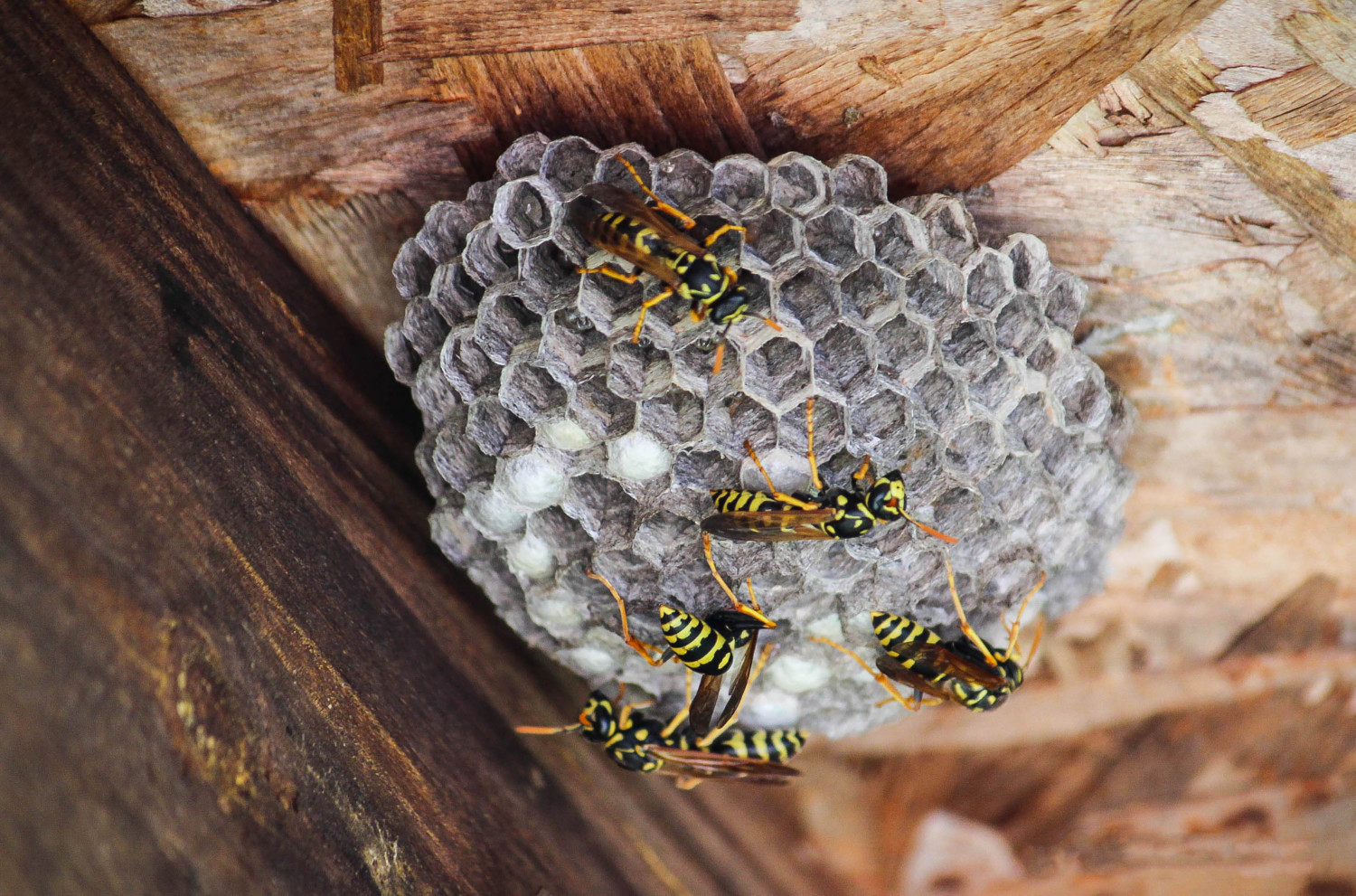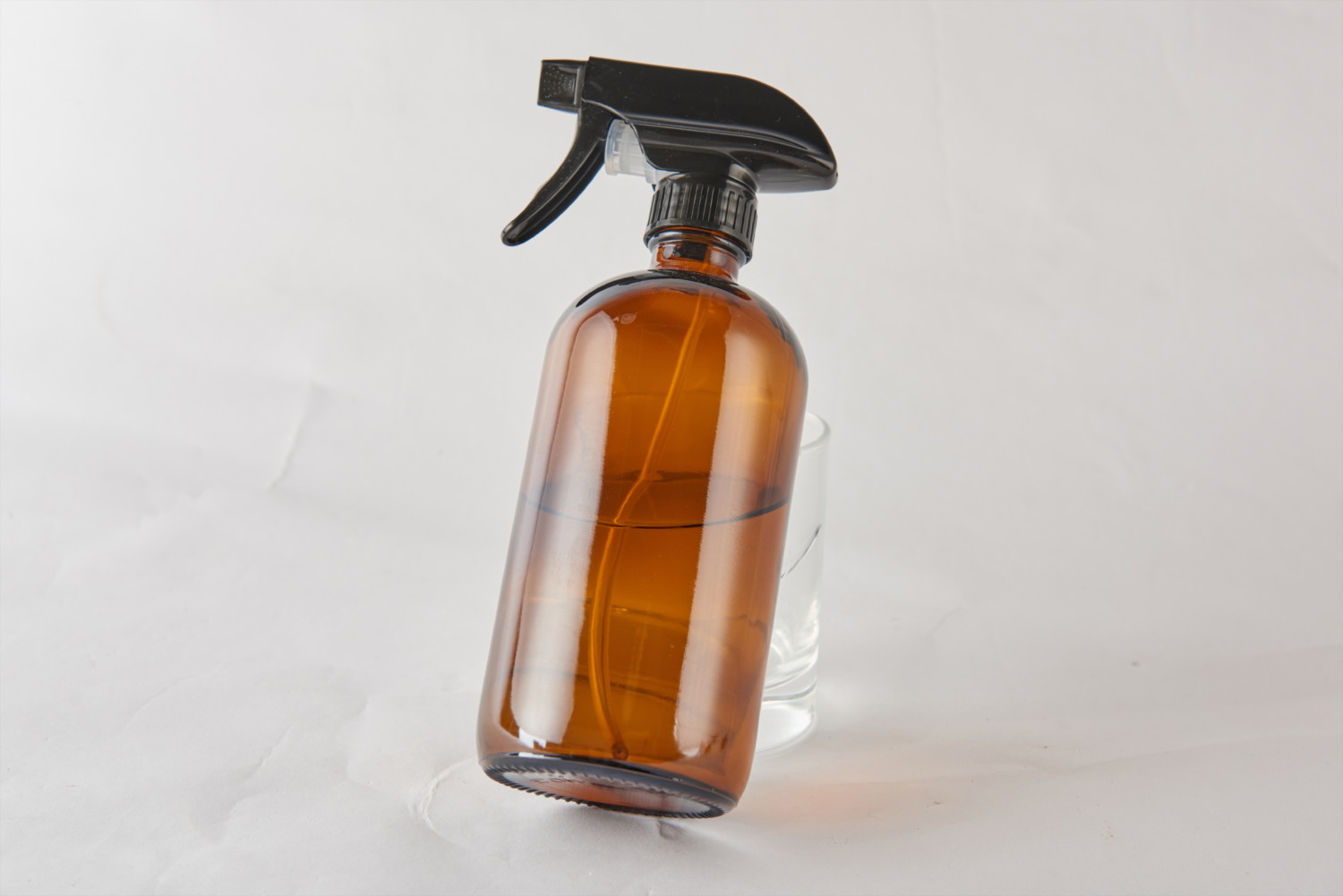Wasps are real party poopers. First, you spot one and the next thing you know, your deck seems inundated by these pesky invaders.
Honey bees, yellow jackets and paper wasps are the most common offenders when it comes to stings. This is usually because they have a nest they are trying to protect. While it’s always nice to sport a motto of “live and let live” when it comes to bugs, especially when they’re outside your house, wasps are hard to ignore because they can legitimately hurt you.
Wasps are most active in July, but can be seen from spring through fall. They prey on spiders and other insects. If you see a wasp flying around, whatever you do, don’t swat at it! This will trigger a pheromone release signaling to other nearby wasps that you are a threat. Yikes!

An ounce of prevention goes a long way when it comes to keeping these unwanted visitors at bay. There is plenty of chemical-based wasp repellant on the market or you can even take simple steps to deter them from your property by creating your own homemade wasp repellent. Here are a few ways to either prevent or get rid of wasps at your house so you can enjoy more outdoor time with friends and family without worrying about stings.
Gets Plants That Wasps Hate
Wasps are averse to certain plant types, including wormwood, citronella, spearmint, thyme and eucalyptus. If you’ve had wasps in the past, in certain areas of your home like your back deck or front porch, planting these varieties can keep them from flying past your place. If you want to add color while you’re at it, opt for pennyroyals, geraniums and marigolds. Steer clear of colors wasps favor like blue, violet white and yellow-colored plants whenever possible, or create an herb garden with mint and basil, which are also natural wasp repellents.
Don’t Leave Food Out
One of the easiest ways to prevent wasps from visiting is to make sure no food scraps or crumbs are laying around your deck. They are attracted to grills because they like protein. So clean your grill after each use. Kids love to leave their soda cans and half-eaten fruit laying around. This is another no-no because wasps love sugar just as much as we do.

Remember that phrase, “Don’t feed the bears”? It goes for wasps too. If your trash, compost and recycle bins are nearby, they should be sealed properly. If there’s any leftover food residue on the outside of the bins, give them a quick hose down.
Seal Cracks and Holes
Wasps nest in hollow trees, underground and in man-made structures. They also like to hide out on the edges of house siding or those spots where wires or pipes enter the home. They can enter into homes through bathroom or kitchen vents or even the chimney. Wasps will not only fly into areas, they’ll crawl in, too. Seal up cracks and holes in fall, before wasps start setting up their homes in spring.

Destroy Nests
Ditch the bug sprays filled with nasty chemicals and go for a more natural route with a wasp repellent. You can get rid of wasps with soap and water because the soap clogs up the wasp’s breathing pores, which causes them to die immediately. Fill a spray bottle with water and add two tablespoons of dish soap. Wait until after dusk, when wasps are typically in their nest at night and spray away. Shake the bottle well and spray liberally over the nest.
It’s a good idea to wear long sleeves, pants and gloves when you’re purposely going near a wasps nest. Tuck everything in that you can, such as pant legs into your socks, shirts into pants, sleeves into gloves, for obvious reasons.
Make a Trap
Build a wasp trap with items you already have on hand, like an empty liter of soda and sugar. Cut off the top of the container, just where it broadens from the top nozzle. Invert the spout and add sugar water to the bottom of the bottle. The plan is to have the wasp fly into the bottle but not to be able to escape. If the opening is too large, cover a portion with packing tape or cloth with small holes punched out.
Use Essential Oils To Deter Wasps
Create a wasp repellent spray for your deck and outdoor siding. Studies have shown wasps are repelled by certain scents and you can use this to your advantage. In a spray bottle, mix water, a few drops of dish soap and a scent like geranium, clove or lemongrass. Then mist the outside areas of the home where wasps like to nest (under eaves, porch roofs, ledges and crevices, for example). This can add an extra layer of protection against these pesky insects.

Do wasps send you running for cover? If so, we hope these tips can help you take your time outside back!
This story originally appeared on Simplemost. Checkout Simplemost for additional stories.


